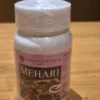Chirbilwa/Indian Elm
|
Botanical Name |
Holoptelea Integrifolia |
|
Family |
Ulmaceae |
|
Sanskrit: |
Chirbilwa, Arari, Karanji, Puti, Putika, Udakirya |
|
English |
Indian Elm |
|
Hindi |
Began, Chilbil, Dhamna, And Papari |
|
Kannada |
Neelvaahi |
|
Malayalam |
Aaval |
|
Telugu |
Nevili |
|
Tamil |
Aapa |
|
Marathi |
Bavli |
Distribution:
It is available in tropical asia. Covers sri lanka, india, myanmar, indo-china, and even malaysia
|
Parts Used: |
Twak |
|
Dose: |
Kwatha: 50 Ml To 100 Ml |
Chemical Constituents
Holoptelin a and b, friedelin, hexacosanol, octaosanol, epifriedelinol, myristic, stearic, linoleic, alkaloids, flavonoids, tannins, saponins, glycosides, phenols
Ayurvedic Properties:
|
Quality (Guna) |
Laghu And Ruksha |
|
Taste (Rasa) |
Tiktha, And Kashaya |
|
Metabolism (Vipaka) |
Katu |
|
Potency (Virya) |
Ushna |
|
Impact (Prabhava) |
Lekhana |
Pharmacological Action:
- Anti inflammatory activity of chirubilwa is due to presence of indomethacin, and ethanolic extract of the leaves, and even it helps to relieve edema.
- Antioxident property of chirubilwa is in the form of vitamin e, ethanol extract helps in inhibiting the oxidation of linoleic acid.
- Antimicrobial activity with certain phytochemicals like 1,4, napthalendione derivates which are having antibacterial activities, and even methanol, and aqueous extracts are also having antibacterial activities.
- Wound healing activity: methanolic extracts of chirubilwa leaves and stem bark are helpful for wound healing potential.
- Anthelminitic activity and antiviral activity helps to manage certain infections.
Therapeutic Uses
- Abdominal Disorders.
- Leprosy.
- Obesity.
- Blood Disorders.
- Vitiligo.
- Filarisis.
- Diabetes.
- Dysmenorrhia.
- Intestinal Worms.
- Rheumatism.
- Flatulence.
- Colic.
Some of the common formulations
- Chiruwilwadi kashyam.
- Chiruwilw kashayam.
- Gandharvahasthadi kwathachurna.
- Indukantha gritha.
- Rasnadi churna.




